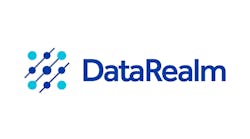Keynoting the Siemens' North American Automation Summit in New Orleans earlier this summer was Doug McCuistion, the former NASA executive who led the Mars exploration program. In his speech, he emphasized the Siemens connection to Mars.
Siemens software was used in designing the rover. "Siemens," said McCuistion, "was an important part of making the Curiosity rover work. This is a great automation story because of the seven minutes of terror—the pucker factor for this mission—when the rover sent, 'I'm starting my sequence,' it was already on the ground. We didn't know the end of the movie, but it was all over. That 14-minute bidirectional communication lag made the mission totally autonomous—fully automated."
Coming back to earth, the conference focused on another national mission—renewing manufacturing, both in the United States and in Europe. A panel discussion on the subject featured Patricia Panchak, editor in chief of Industry Week, Raj Batra, president of Siemens Industrial Automation, Jerry Gipson, retired senior technology director for the Dow Chemical Co. and immediate past chair of Fiatech's board of advisors, and Bonnie Knopf, president of Intrepid Plastics Manufacturing and Intrepid Idea Innovators.
Batra pointed out that, for a number of reasons, there is a new growth in the manufacturing sector in North America and Europe. People are talking about advanced manufacturing technologies. "We talk about the integrated production process and the concept of one supplier for the entire integrated process," he said.
Knopf described how her company survived the downturn, and brought home contracts that she'd lost to the Chinese long before. "We have been focused on cost," she said. "The triad is cost, quality and delivery. Being local allows us to provide timeliness in delivery, high quality and reasonable cost. We have a very heavy emphasis on quality, higher than ever before."
Gipson talked about the so-called skills gap, saying, "There is good news, but it has to be communicated in context. There are about 12 million manufacturing jobs. The jobs are evolving with a requirement for more advanced skill sets and more accountability embedded in those jobs. The gaps—companies do have difficulty filling open jobs, yet we have historically high unemployment—so there's a mismatch. There are not enough STEM-trained people. Companies and industry are taking more responsibility to address these needs."
The discussion ranged from the skills gap to asset age and management to managing millenials and potential wage wars for talent and experience.
Dennis Inverso, principal consultant with E. I. Dupont and Co. discussed his company's vision for the "smart plant" of the future. He talked about embedding intelligence into the engineering tools, automation systems, manufacturing computing systems, field instrumentation, safety instrumented systems and production assets themselves. Inverso quoted the Smart Manufacturing Leadership Coalition: "Smart Manufacturing is a dramatically intensified, knowledge-enabled industrial enterprise in which all business and operating actions are executed to achieve substantially enhanced energy, sustainability, environmental, safety and more sustainable manufacturing."
Siemens introduced many new products and concepts at the event, including the North American launch of the latest Siemens integrated engineering architecture and the latest versions of PCS7 and new controller designs.
Siemens also announced the 2013 Customer Excellence award recipients. They were Forum Energy Technologies, Kooler Ice (along with Prism Systems) and Louisiana Sugar Refining.
You can visit our SoundOff's live-from-the-summit blog posts.



